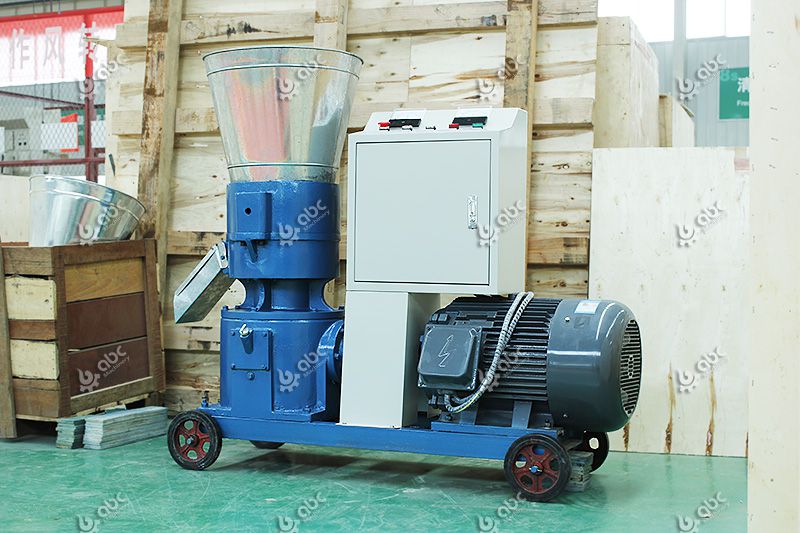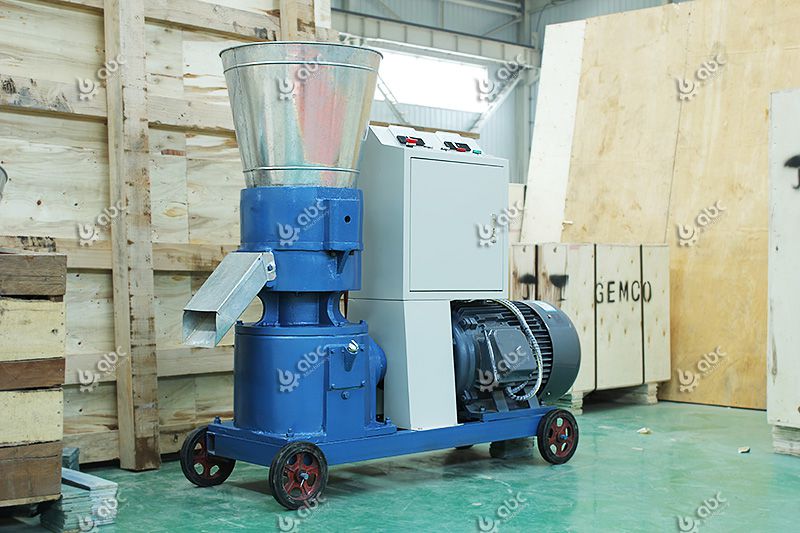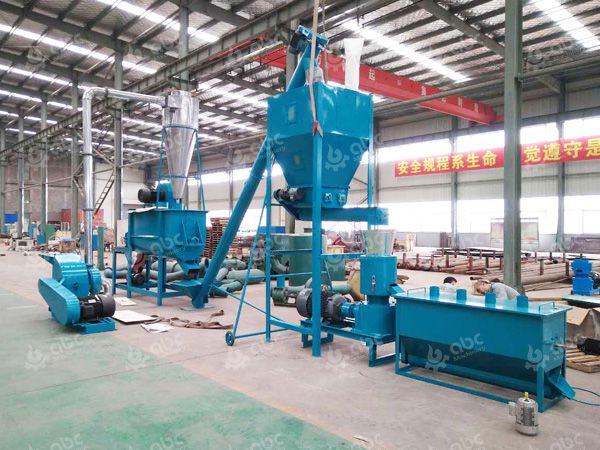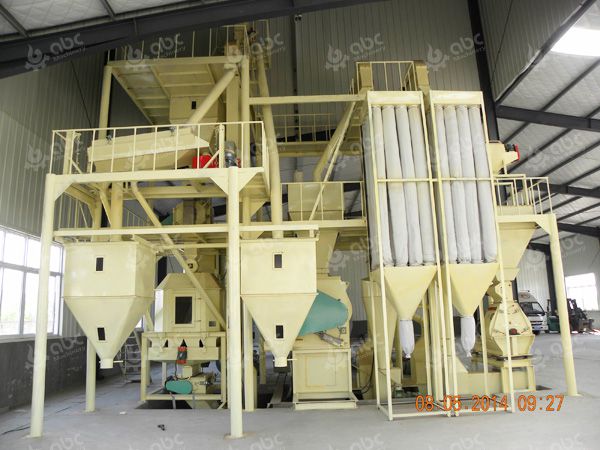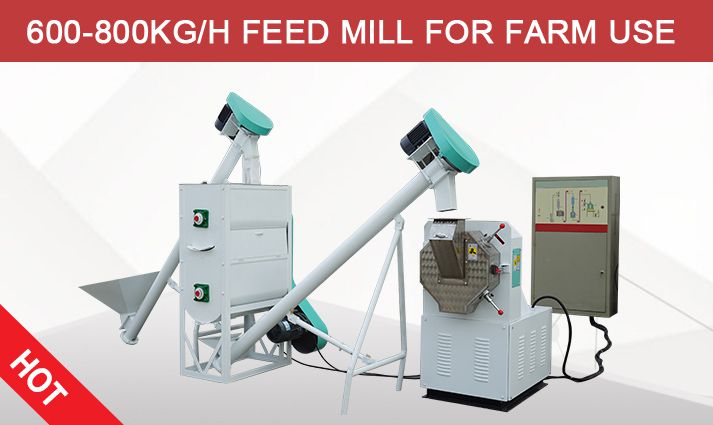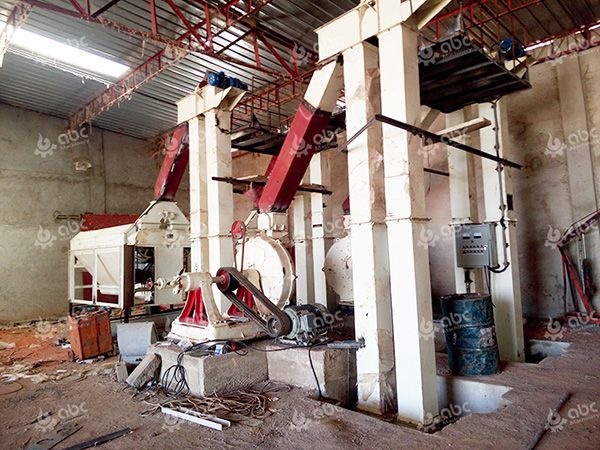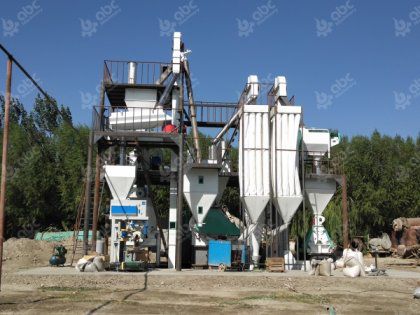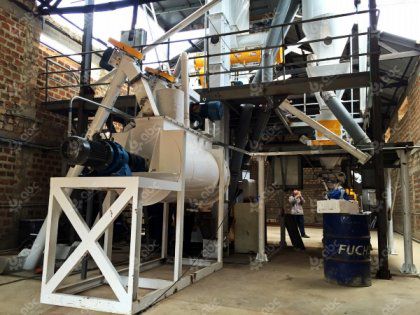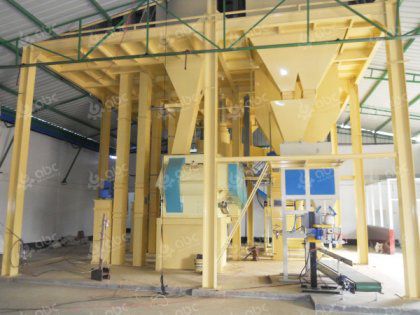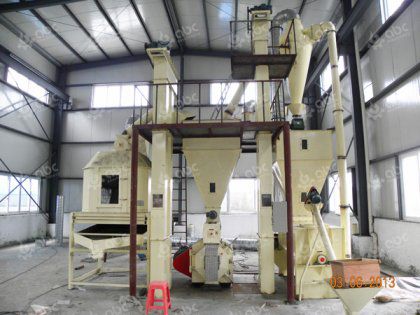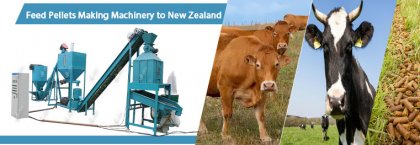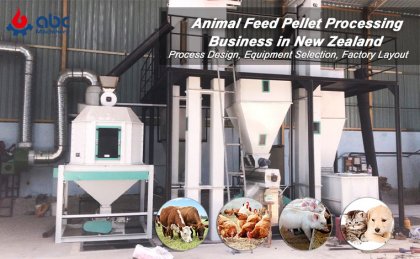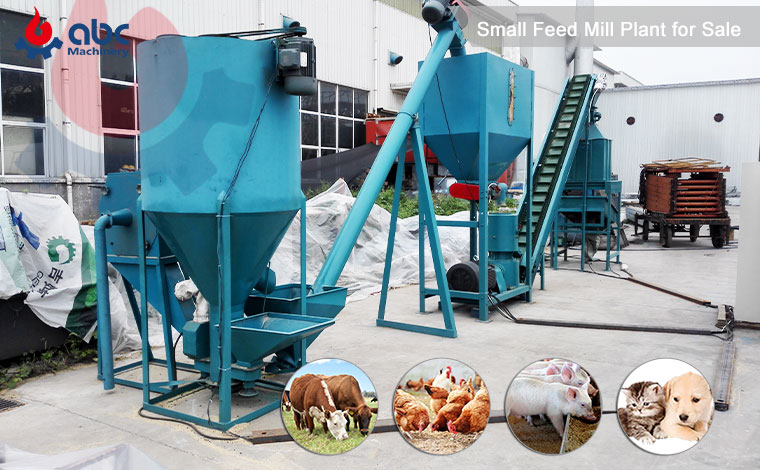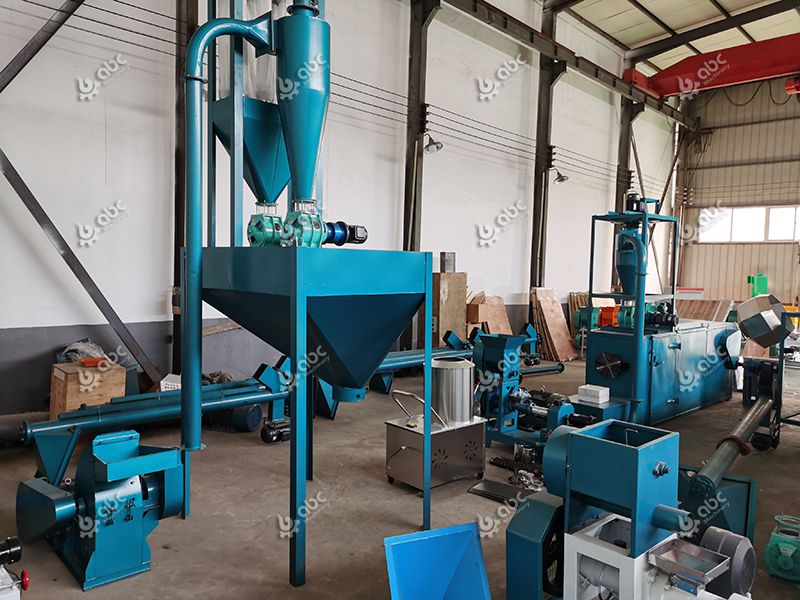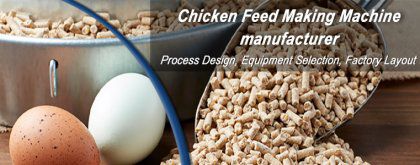Feed pellet is a kind of compound feed product, it is a kind of pellet feed which is made of mixed material or single feed (Pasture, straw, rapeseed meal etc.) through feed pellet equipment or extrusion machinery. It is usually cylindrical and has various sizes depending on the type of thinking animal.
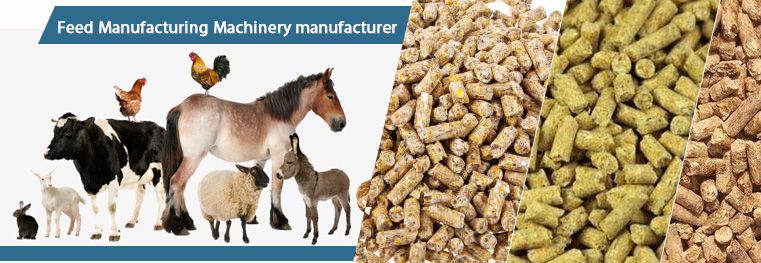
Livestock Poultry and Fish Feed Pellet Product
ABC Machinery is a professional distributor of feed pellet production equipment. To learn more about the production details of animal feed pellets and the business plan of establishing a feed pellet factory, please contact us! We will have professional business personnel to reply to you!
Factors Affecting Feed Pellet Products
1. Pellet size:
The finer powder is crushed, the better it is for water heat treatment. On the contrary, the coarse-grained powder would have low water absorption capacity and poor tempering effect. According to the needs of different growth periods of different livestock, poultry, fish, etc., different specifications of pellet feed can be used for grinding holes.The following table is the size of feed pellets required by different animals.

Make Feed Pellets of Different Sizes
| Animals | Feed Pellet Size |
|---|---|
| chicken | 2.4-4.0 mm |
| rabbits and sheep | 4.4 mm |
| horses, cattle, pigs | 9.5 mm |
2. Material Bulk density:
The bulk density of the material has a direct impact on the output. For making the same size pellets, the higher bulk density the material is for pellet making, the higher output and the less power consumption it needs. Otherwise, the output is low and the power consumption is big.
3.The Quality of the Pellet Machine
With the history and popularization of new small pellet machinery, it is now possible to conveniently process powder feed into pellet feed. The selling price of this kind of pellet feed processing machinery is about 500-4000 USD. The powder feed is gelatinized at high temperature and discharged from the film holes under the pressure of the roller to make pellets. The size of the pellets can be easily adjusted.
If you want to know more about the details of the feed pellet equipment and the price of the feed pellet production line, please feel free to consult us!
4. Chemical composition of the material
Amyloid: different forms of amyloid have different effects on pelletting. The surface of raw starch particles is rough, so it has great resistance on pellet making, and when the raw starch content is high, the feed pellets output is low and the pressing die will wear seriously.
While the ripe starch has the following crucial terms:
- It exists as gelatinous after being conditioned to absorb water, and the gel is good for the material to pass through the mold hole, making the feed pellets production increase.
- At the same time, the dried and cooled gel can bond other components around it, so that the feed pellets products have better quality.
- During the process of conditioning, starch particles are sticky after being steamed by steam and partially damaged and pasted under the process of pressing of feed pellet mill roller and die, which makes the structure of feed pellets precise and quality improved.
- Besides being related with the structure and properties of all kinds of starch, the feed pellet making process is related to the fineness of starch powder.
So when corn and sorghum are used as the main feed pellet making raw materials, the grain size should be paid attention to before granulating.
Protein: the protein is heated and deformed, and the bond strength is enhanced.
Oil volume: the oil and fat inherent in raw materials in the process of Granulating Temperature and pressure does not cause the oil squeeze, so the granulating effect is not large, but has significant effects on Yield and quality of grease pellets. Adding 1% of the fat in the material will make the particles soft, and will obviously improve the production of pellets, which will reduce the effect of die and roller wear. But the oil content of the raw material before granulation is high and the pellets are loose. The amount of oil before granulation should be limited to 3%.
Molasses: normally added less than 10%, it can be used as a binder to enhance the hardness of the particles, and the effect depends on the material absorbability of molasses.
Fiber: there is no bond itself, but if the fiber is too much and the resistance is too large, the output is reduced and the die wear is fast. The material with high crude fiber content is loose and porous in the inside, and the water should be controlled.
If the moisture is too high and the temperature is high, the pellets will expand quickly and be easy to crack after the mold is out.
Heat sensitive materials: add some vitamins, seasonings and other heat sensitive material pelletting, pelleting temperature should be reduced, and excess added, to ensure effective content of these ingredients in the finished product.
5. Binders:
There is not much starch, protein or other cohesive components in some fodder, which is difficult to make feed pellets. Therefore, it is necessary to add the binder to make the grain reach the desired degree of seed setting.
What are the physical and chemical changes in protein, carbohydrates, fats, and vitamins in the granulation process?
Protein
Physical change: protein will decrease the solubility of protein, and the water solubility of different raw materials will also be different under different granulation conditions due to their protein content. The general trend is to reduce the protein concentration of the high water solubility is more powerful then fuzzy ambiguity more protein solubility in water is small.
Changes in chemical properties: protein gradually decreased, reduced the protein hydrolysis time in the digestive tract, the protein content in the whole process basically remained unchanged, and the stability and potency of amino acids declined basically.
Carbohydrates:
Physical changes: starch absorbs water and begins to dissolve and loses its original crystal structure. The swelling temperature of starch in different materials, can make starch to starch gelatinization degree requirements in high temperature extrusion conditions, this process can also achieve modulation to improve granulating and nutrition, this structure has the protection performance and improve the feeding effect of function.
Chemical changes: in addition to the production of starch, starch is also hydrolyzed, which provides more suitable conditions for the enzyme digestion of animals. After granulation, the hygienic index of the feed is good, with almost no source of the source.
The change of fat:
High temperature makes lipase inactivation, reduces the hydrolysis of fat during storage, and improves the stability. Fatty acids protect the structure of lipoxygenase with branched cleavage, and reduce the acidification speed.
Vitamin:
Friction is the main factor that makes vitamin unstable. It destroys the crystal layer of vitamin and makes a lot of vitamins oxidized. The pressure will seriously damage the gel layer of vitamin A and other fat soluble vitamins.
Feed Pellet Production Line Working Video
In the past ten years, pellet feed has made great progress in many countries. In the United States, Japan, Spain, Germany and other countries, pellet feed accounts for about 60%-70% of compound feed. It can be expected that there will be more developments in the production of shaped full-price feed such as pellets or briquetting!Fill in the form below to contact us, you will get more feed pellet information!


